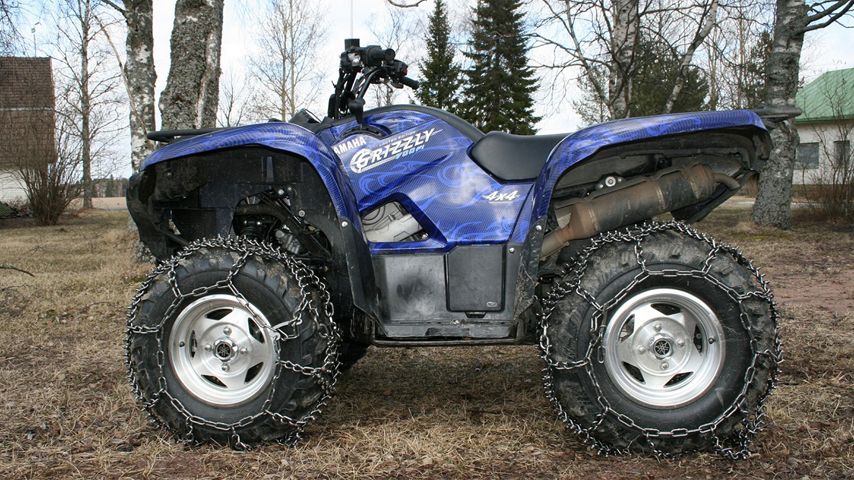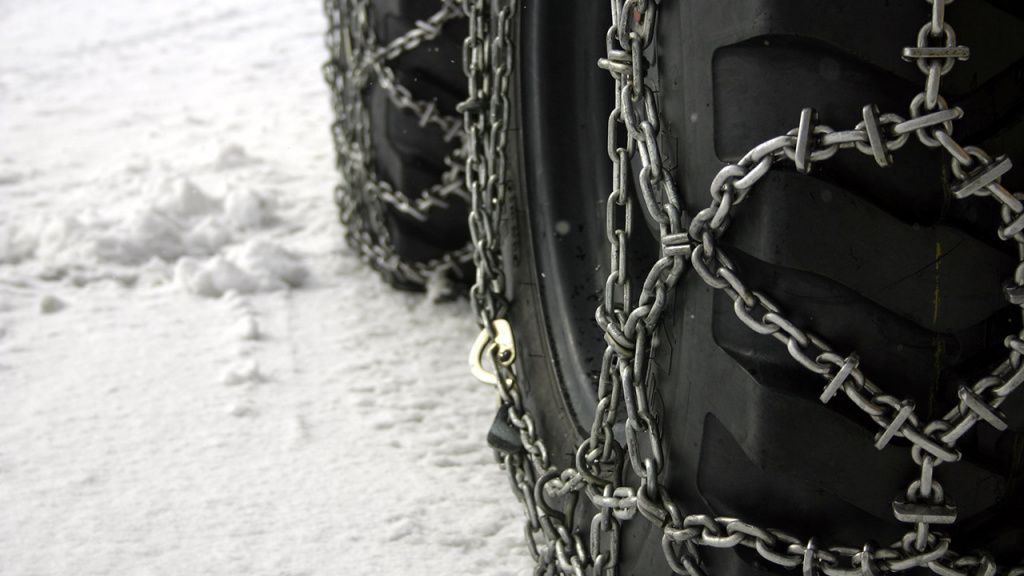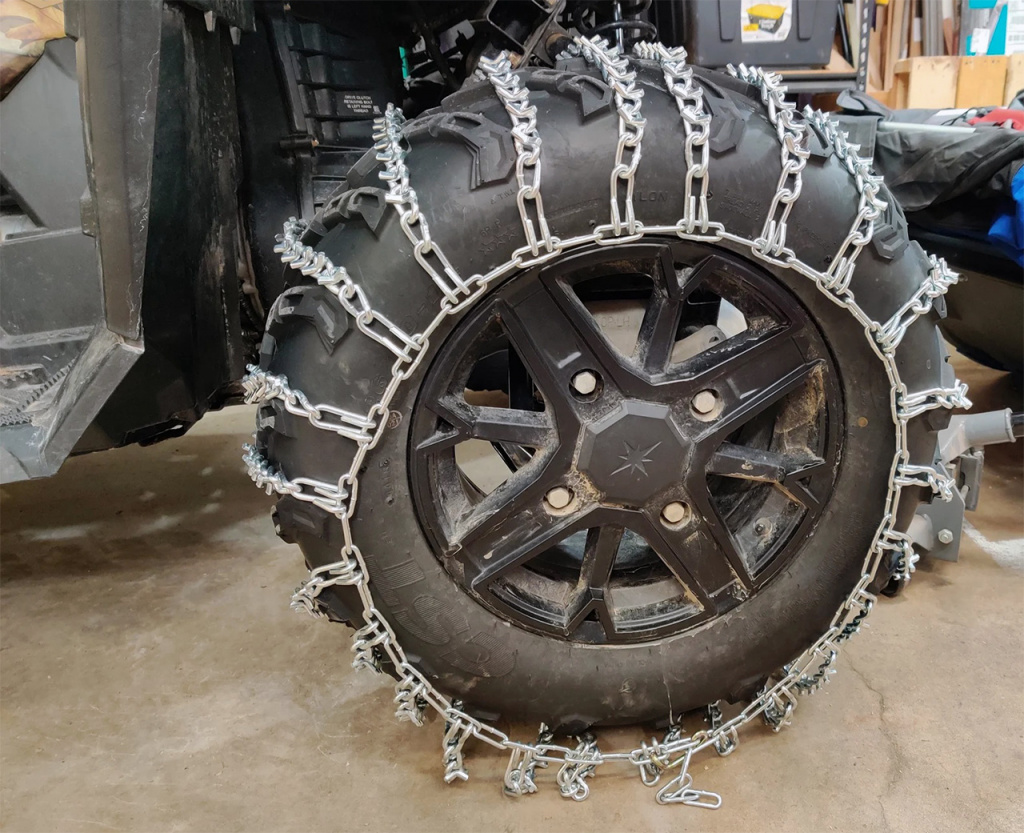How to Install ATV Tire Chains
Choosing to install ATV tire chains can help you tackle snowy and icy terrain you normally couldn't. They are tricky, but not difficult to install. This post will make it easier for you to get a snugger, more worry-free installation.

Do You Need to Install ATV Tire Chains?
The design of the tire chains' metal surface combined with their many studs help them dig into the ice or ground to get better traction than even the most rugged tires can provide. This will greatly reduce but not 100% prevent wheel spinning.
Tire chains do not need to be installed all the time, only when you'll be driving on snowy, icy, or muddy terrain that reduces traction.
Tire chains need to grab onto something hard like the ground or ice to work effectively, so if you'll be tackling unusually deep snow or mud, you'd do better with a snowmobile or tracks.
Remember that adding weight to your ATV will press your machine into the surface, increasing the chains' effectiveness.
How Long Do ATV Tire Chains Last?
It's hard to give an exact time, but the average is a few years. Installing them correctly will extend their life. The vehicle's weight and more difficult terrain can shorten the lifespan of the chains.

Before You Buy ATV Tire Chains
Make sure you have room
Your ATV may not have clearance in the wheel well for tire chains to fit and move freely. This is particularly likely on the front of the ATV. You'll need to know that before you purchase tire chains and go to the trouble to install them.
It takes at least two inches all around the wheel to fit tire chains.
Measure the top and sides (front, back, and interior) of the wheel well. Also check for parts that are close to the tire to make sure they are not less than two inches from the tire. Turn the wheels to the left and to the right and measure between both turns.
You might be able to add wheel spacers to give yourself the clearance you need. Consider the pros versus cons of having tire chains and adding wheel spacers, and go for it. Make sure you don't overdo it with the wheel spacers though. Unnecessary width puts unnecessary strain on your machine.
Choose the right size
Tire chains come in different sizes. On the side of the tire, you'll find a number that represents its size. You then choose a tire chain designed to cover a range of tires sizes that includes yours. Because there's a range, you'll need to use a few tricks to make the chain 100% fit your specific tires.
Get your tools
To install ATV tire chains, you'll need pliers or a wrench and shackles or zip ties. A valve stem removal tool is not required, but it will make your job easier. You may also want to have an air compressor with a tire inflator.
If the chains need modification, you'll need an angle grinder or chain cutter.

How to Install ATV Tire Chains
Park the ATV on a flat, smooth surface like concrete, if you can, and put it in neutral with the parking brake on.
Deflate the tires. This is where a valve stem tool is handy. 3-4 PSI is a good general amount to aim for, but some people completely deflate their tires.
Deflating them more does provide a tighter fit when you're finished. The downside is that if you achieve too tight a fit, particularly on poor quality tire chains or tire chains not designed for an ATV, you may break the chains.
Spread the chains out. You'll lay them in front of the front tires and behind the back tires. Make sure the rougher, grabbing side of the chain is facing up.
If your chains come with boomer fasteners rather than C-hooks, you'll need to orient the chain so that the curved part of the boomer fastener is facing in the same direction as the tire rotates to prevent the chains coming undone in challenging terrain.
Diamond pattern chains come with a set of shackles on one end. You don't need them yet, so take them off and set them somewhere nearby.
Pull the chain up and onto the tire. Lift it and move it around so that you have the same amount of chain on each side of the tire.
The tougher side of the chain that is meant to dig into the ground should be facing up. Make sure the chain is flat without any twists in it.
The end of the chain should be touching the ground where you can tuck it under the tire.
Release the parking brake and roll the ATV. You'll roll it forward on rear tires or backward on front tires until about 15 inches of chain stick out beyond the tire.
Make sure the inner and outer chains are even so they don't pull the chains in one direction while in use.
Connect the fasteners into the side chain links.
Diamond pattern chains have additional ends to slip through metal rings and then connect to the side chain.
Adjust the chain as needed to make sure everything fits snugly, evenly, and without twists or bumps.
Tighten the shackles by hand.
Repeat these steps on all of the tires.
This is when you reinflate the tires to their recommended pressure. You want the chain to become snug just before the tire is fully inflated. If it gets completely snug say 75% before the tire is inflated, stop and loosen the chain a little before you continue.
Test drive your ATV for just a few minutes at a slow speed. If your chains have slipped or are not quite as snug, you can partially deflate, readjust, and retighten the chains to perfect them.
Secure any loose chain ends that may bang around and damage your machine.
You're done and ready to ride!
What If ATV Tire Chains Don't Fit?
You may not be able to find tire chains that perfectly match your tires or you may want to use chains you already have. Tire chains can also stretch over time and may need to be shortened. If you can't simply tighten them more, you will need to cut them.
You can cut your tire chains with an angle grinder or bolt cutters.
Ladder chains are easiest because you can cut pretty much anywhere. When you cut diamond chains, you'll need to cut where you are removing an entire diamond.








































